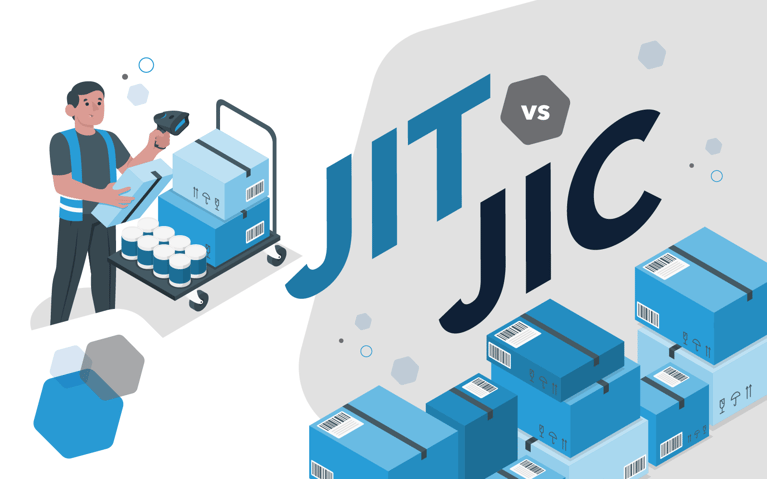Implementing accurate and streamlined stock replenishment processes can reduce costs and boost uptime for your retail business in 2024. Through strategies like analyzing past sales and promoting interdepartmental communication, retailers can save time and reduce costs as they restock inventory. In this article, dive into tips for understanding inventory data, facilitating interdepartmental communication and implementing sustainable inventory practices.
Comprehensive sales analysis and inventory assessment
As 2023 draws to a close and holiday purchases die down, set aside time to complete a comprehensive sales analysis and inventory assessment for your retail business. This deep dive into inventory data will help determine your next steps for stock replenishment orders and inventory prioritization.
Look at your sales data to identify which products performed the best during the holiday season, and the year as a whole. A thorough understanding of top-performing products will reveal where you should focus your stock replenishment efforts. In-depth inventory assessment and analysis will help you gauge the extent to which each item’s inventory was depleted. This will enable you to plan replenishment strategies with precision, relying on on-demand forecasts, rather than engaging in a costly guessing game.
While retail teams must focus heavily on returns during the post-holiday season, soon enough your customers will be ready to resume their normal shopping habits. This reality makes it essential to complete an inventory assessment and proactively restock inventory, especially top-selling items. Inventory assessments, like cycle counts, can feel time-consuming, but with the latest inventory management software, even these traditionally manual processes can be automated. Having appropriately stocked inventory is key to preventing stockouts, while balancing carrying costs and reducing over-ordering.
Optimizing supply chain resilience and flexibility
Even with careful data analysis and planning, a new year is bound to bring new trends and unpredictable inventory needs at times. In preparation for unexpected fluctuations in demand, it’s crucial to lay the groundwork for a resilient and flexible supply chain for your retail business.
First, prioritize strong partnerships with suppliers and logistics providers to streamline each phase of the supply chain for ecommerce. Opening the lines of communication and strengthening trust with these partners allows for a fuller picture of every step of the logistics process, and thus, more robust planning. Armed with all available information, you can better ensure the smooth and timely restocking of all of your popular products, and manage unexpected demand fluctuations promptly.
Another helpful strategy for avoiding supply chain disruptions that may be harmful to your business is seeking out backup sourcing options. This way, if mishaps occur with one supplier, you can mitigate the negative effects on your available inventory through a secondary node. Contingency plans like this help minimize potential disruptions in the supply chain for ecommerce and keep your customers satisfied.
Promotions and clearance strategies for excess inventory
Keeping your hottest items stocked is undeniably important, but so is clearing out excess inventory. Whether you overstocked on an item that didn’t sell as well as you’d forecasted during the holiday season or you’re simply transitioning to new styles, moving overflow inventory is crucial for reducing carrying costs and making room to restock inventory for top items.
To clear out inventory that’s past its prime or overstocked without completely sacrificing profit, try running targeted promotional campaigns. Working through excess inventory becomes a breeze, especially if you can pinpoint customers who have bought similar items and retarget clearance promotions to them. A simple “You might also like…” email sequence might be all you need to clear out a pesky item crowding your shelves!
Another strategy for holiday inventory clearance is creating bundles with hotter items. Deals like this aim to promote the sale of slower-moving items while also further incentivizing purchases and maximizing revenue during the often challenging post-holiday period.
Getting creative and implementing your unique customer insights will help you design the best-targeted promotions for your specific audience. These campaigns to incentivize clearance of holiday inventory will help prevent costly inventory obsolescence.
Effective communication and collaboration across departments
By now, it’s clear that stock replenishment and inventory management efforts can’t exist in a vacuum. Engaging various departments, from sales and marketing to logistics and purchasing, is essential for any effective stock replenishment strategy. Working to open the lines of communication and collaboration across departments as soon as possible will set you up for smoother and more successful inventory management processes in the post-holiday season and beyond.
As an example, a retailer may create a communication workflow in which the customer success team compiles and analyzes sales data and customer feedback as the holiday season wraps up. Then, the customer success team sends this data to the inventory management team. Inventory professionals can then compare the data and feedback with that from the inventory management software to determine which items have been moving more slowly than expected, and which items are running low.
From there, the inventory management team can loop in the sales and marketing departments and communicate which items need an extra push in bundles and promotions. Using the sales data and feedback from the customer success department, the sales and marketing teams can appropriately target marketing materials and promotions to the best possible audience.
Without properly interacting with other departments, inventory management teams cannot properly fulfill their roles. Only with cross-departmental decision-making can retailers truly optimize their stock replenishment efforts and stay aligned with ongoing marketing initiatives.
Sustainable inventory practices and eco-friendly replenishment
Every year, key consumer bases become increasingly concerned about sustainable practices and eco-friendly products. To best align with these buyers, retailers can implement sustainable practices for inventory management and replenishment. A few strategies for making your inventory practices more sustainable include:
-
Implementing a recycling program
-
Choosing package and label options that create less waste
-
Creating waste reduction measures for returned or unsold products
These small shifts can help promote a circular economy and minimize your overall environmental impact. In addition, leveraging tools that help you place more precise inventory orders, such as inventory management software and automated stock replenishment tools, can help you reduce surplus inventory. This precision not only keeps excess products out of landfills, but also improves your bottom line.
With careful planning and interconnectedness among departments, retailers can streamline stock replenishment practices to boost efficiency and reduce costs in 2024. Partnering with an experienced 3PL is the best way to forecast inventory needs and ensure the smoothest possible processes are in place for the new year. Contact us to connect with a Cart.com inventory expert for more information.
Subscribe to our emails for the latest industry insights!
By entering your email, you agree to receive marketing emails from Cart.com






